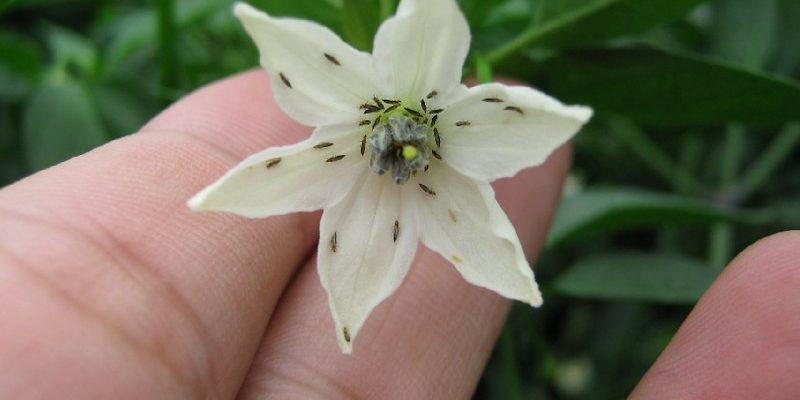In greenhouse farming and high-value crop production, thrips are notorious “mini destroyers.” Tiny yet fast-breeding, they pierce and suck the sap from plants, leading to leaf deformities and reduced yields. Even worse, they act as carriers for multiple plant viruses. On crops like tomatoes, peppers, cucumbers, and roses, a thrip outbreak can quickly overwhelm traditional chemical controls, leaving behind pesticide residues and still failing to stop the damage.
To make matters worse, standard insect netting offers little protection against thrips. Due to their extremely small body size, only specialized fine-mesh exclusion nets can effectively block them.
As a dedicated agricultural netting manufacturer, INSONSHADE has spent years working with commercial growers and agricultural suppliers to design and produce netting specifically for thrip control. In this guide, we’ll take a deep dive into thrip netting—what it is, how it works, and the key factors to consider when choosing and installing it.
What Is Thrip Netting? How It Works and Key Specifications
Thrip netting, also known as anti-thrips netting, is a fine-mesh insect screen designed specifically to stop thrips from entering greenhouses or open-field crops. Its defining feature is its ultra-small mesh openings, which create a physical barrier against these tiny, highly mobile pests. By preventing thrips from accessing crop areas, it reduces both infestation risks and dependence on chemical pesticides.
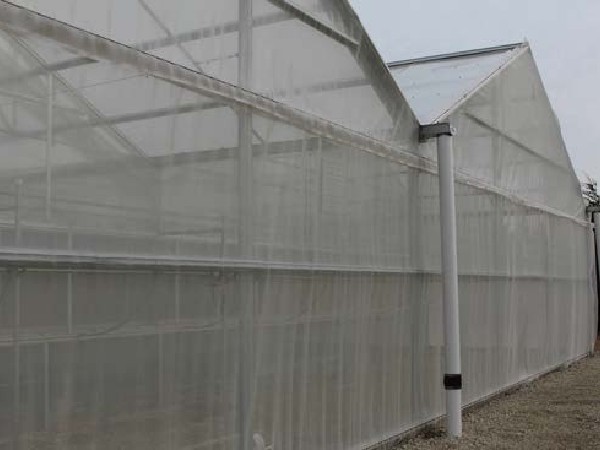
Insect exclusion screening is placed over the greenhouse opening (Photo: Raymond Cloyd)
How It Works: A Physical Barrier Based on Size Difference
Thrips are slender-bodied insects with extremely narrow widths. For example, the thorax width of the Western flower thrip can be as small as 100–200 microns. The principle behind thrip netting is simple yet effective: use a mesh opening smaller than the insect’s thorax width to physically block its passage, creating a complete exclusion barrier.
Studies show that mesh openings smaller than 192 μm (around 76 mesh) can significantly reduce thrip penetration rates. For even higher protection, especially for sensitive crops or virus-control applications, 150 μm or even 135 μm openings can achieve nearly 100% exclusion in trials.
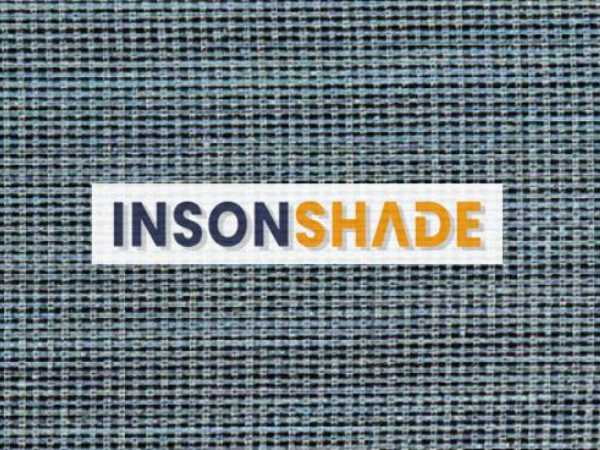
INSONSHADE-produced thrip netting
Key Specifications for Thrip Netting
| Parameter | Recommended Value | Purpose / Function |
| Mesh Opening Size | ≤192 μm (150 μm or smaller recommended) | Physically blocks thrips from passing through |
| Mesh Count | 50–80 mesh | Directly related to aperture size; higher numbers mean smaller openings |
| Material | HDPE (High-Density Polyethylene) or PA (Polyamide) | High strength, UV resistance, and anti-aging |
| Weight (GSM) | 40–80 g/m² | Influences breathability and durability |
| Color | Primarily white or transparent | Enhances light transmission for greenhouse crops |
| Functional Treatment | UV stabilized, anti-aging | Suitable for long-term use in high-sunlight regions |
While the industry standard weight range for insect netting is 40–80 g/m², our field experience shows that achieving ultra-small mesh openings (≤150 μm) without compromising tensile strength, lifespan, or wind resistance often requires a heavier design.
For enclosed greenhouses, commercial plantations, or multi-season seedling operations, we recommend reinforced netting with weights above 100 g/m² for maximum durability and long-term protection. High-quality thrip netting should also strike a balance between airflow resistance and light transmission. Using a high-porosity weave improves ventilation and prevents excessive shading, which could otherwise cause overheating or inadequate light for crops.
How to Choose the Right Thrip Netting Specifications
When selecting thrip netting, don’t rely solely on mesh count or weight (GSM). You’ll need to consider crop type, climate, application location, and maintenance requirements. Here’s a quick reference guide:
| Decision Factor | Recommended Specification |
| High-risk crops | ≤135 μm mesh openings |
| Standard crops | 150–160 μm mesh openings |
| Ventilation priority | ≥180 μm mesh openings, ensure edge sealing |
| Hot & rainy climates | High-porosity weave + light-colored netting |
| Service life | HDPE + UV stabilization for ≥3 years |
| Installation method | For enclosed structures, use reinforced edges and custom sizing |
Based on years of project experience, INSONSHADE recommends evaluating these four key dimensions when choosing thrip netting:
1) Match Aperture Size to Crop Sensitivity
Different crops vary in their sensitivity to thrips.
For highly sensitive crops such as tomatoes, peppers, cucumbers, and roses, use mesh openings of ≤135 μm to ensure maximum exclusion and reduce virus transmission. Moderately sensitive crops such as strawberries, beans, and sweet corn are well protected with 150–160 μm openings. For more tolerant crops, especially in projects where ventilation is a priority, 180–192 μm mesh can provide a practical balance between cost, airflow, and pest control.
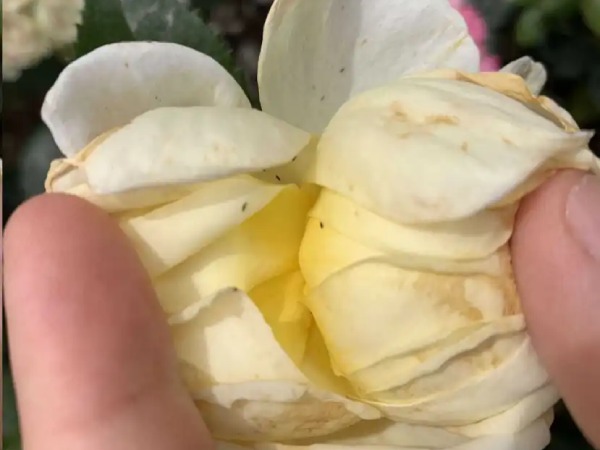
Summer roses under heavy thrip infestation
2) Balance Breathability and Protection in Your Climate
In hot, humid regions such as Southeast Asia or Central Africa, choose high-porosity fine mesh to prevent excess humidity buildup inside the greenhouse. In contrast, in dry and low-wind areas like the Middle East or North Africa, stronger protection meshes can be used but should be paired with mechanical ventilation. For best results in any climate, select products tested to maintain at least 30% airflow permeability to ensure crop comfort and healthy growth.
3) Match Net Strength and Color to Application Site
| Application Area | Recommended GSM | Color Tip |
| Ventilation windows & roof vents | ≥60 g/m² | White/transparent for maximum light |
| Full tunnel or hoop house coverage | 40–60 g/m² | Primarily white for balance of light and pest control |
| Removable fencing panels | ≥70 g/m² with reinforced edges | Silver-gray or light green for better heat reflection |
Color isn’t just aesthetic—light colors reflect sunlight, improve photosynthesis, and are less attractive to thrips, which tend to seek darker environments.
4) Consider Installation Method and Maintenance Frequency
In windy or hard-to-maintain locations, choose reinforced-edge, heavy-duty thrip netting for better tensile strength and durability. For enclosed greenhouses or seedling houses, prioritize UV-stabilized, professional-grade netting with a service life of 3–5 years. Provide proper installation accessories and plans to ensure tight sealing and prevent pests from entering through gaps.
FAQs about Thrip Netting
Choosing thrip netting is not a one-and-done solution. To get the best results, you need correct installation, proper integration with other pest control measures, and a clear understanding of your growing environment. Here are three common questions we hear from clients—chances are you may have the same concerns.
1. How should thrip netting be installed correctly?
Ensure all edges are fully sealed and the netting is pulled tight, covering every ventilation opening and structural gap to prevent pest entry. Use wire or framing to keep the mesh suspended, and secure it with clips, cords, or similar fasteners. This maintains tension and prevents the mesh from touching plants, which can reduce effectiveness.
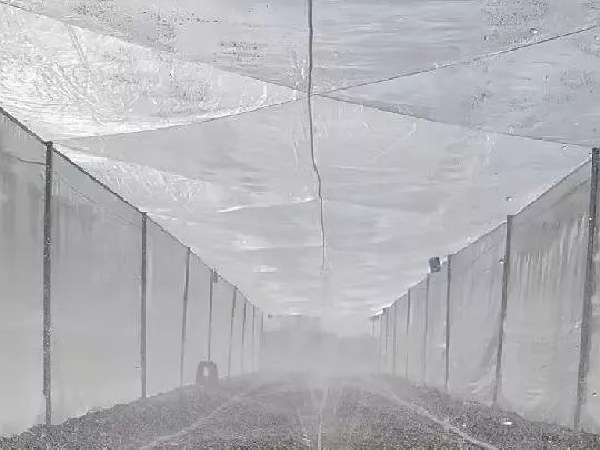
Disinfected greenhouse fully covered with insect netting
2. Will Thrip Netting make my greenhouse too hot?
While thrip netting is indeed finer than standard insect screens, it does not have to block airflow. Choose products with a high-porosity weave that effectively stops thrips while still allowing air exchange. In hot and humid climates, you can also improve airflow with fans, larger vent openings, or by pairing the netting with shade cloth to lower heat buildup.
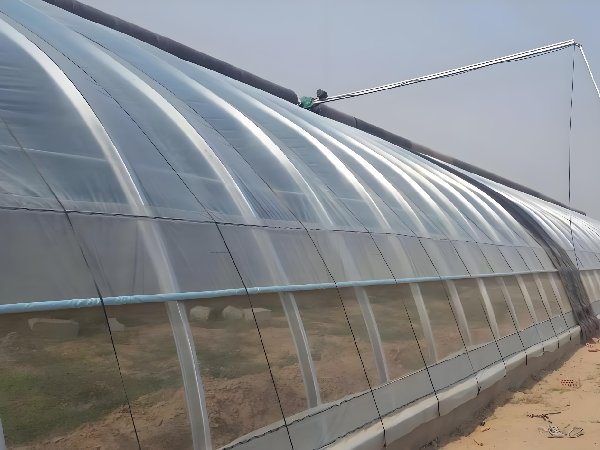
Greenhouse equipped with thrip netting
3. Do I still need other pest control measures after installing Thrip Netting?
Thrip netting is an effective physical barrier, but the best approach is to integrate it into an Integrated Pest Management (IPM) program. Combine it with soil disinfection, sticky traps, and the release of beneficial insects for stronger results. If chemical treatments are necessary, always follow local regulations and crop certification standards to ensure compliance and sustainability.
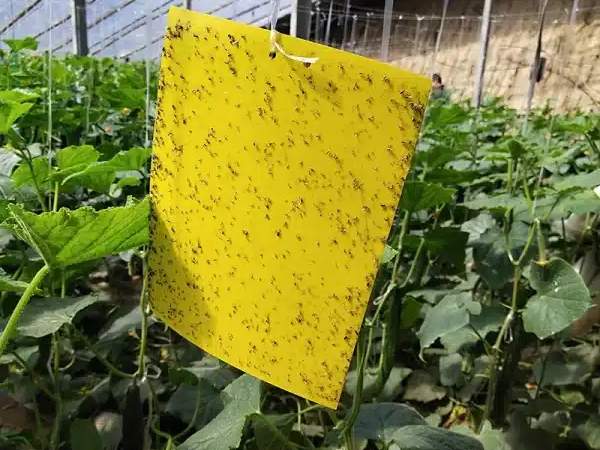
Yellow sticky traps for pest monitoring
Why Choose Us as Your Thrip Netting Supplier
The market may seem flooded with insect netting products, but few manufacturers truly deliver proven thrip control, long-term reliability, and efficient communication. At INSONSHADE, we combine technical expertise, stable production capacity, and extensive export experience to provide high-standard thrip netting solutions for greenhouse projects worldwide.
1. Precision Mesh Control, Tailored for Thrip Exclusion
We can mass-produce high-density insect netting with apertures ranging from 135–192 μm, meeting different crop requirements for thrip exclusion. Our weaving process is precise and consistent, ensuring uniform mesh openings. Each roll is tested with professional instruments to guarantee compliance with thrip control standards.
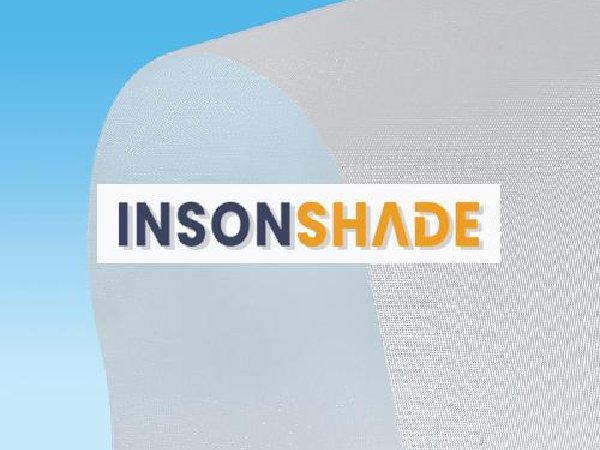
Various mesh sizes of insect and thrip netting offered by INSONSHADE
2. Superior Materials and Long-Lasting Durability
Our nets are made from 100% high-density polyethylene (HDPE) combined with imported UV stabilizers for exceptional sun resistance and anti-aging performance. Field results show a service life of 3–5 years even in high-sunlight regions like Southeast Asia, Africa, and the Middle East—making them a reliable choice for long-term projects.
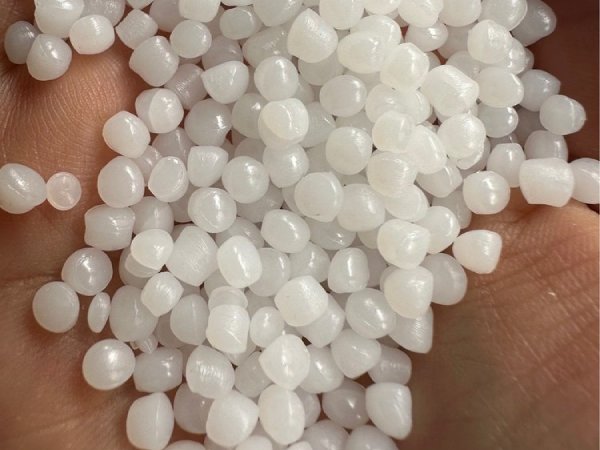
High-quality raw materials are used in netting production
3. OEM/ODM Customization to Fit Your Needs
From aperture size, GSM, width, and color to reinforced edge options, we can customize every detail. For thrip protection, we have mass-produced high-weight, high-protection models such as 50×25 mesh / 135 gsm and 40×25 mesh / 100 gsm, widely used in large-scale greenhouse projects across Africa, the Middle East, and Southeast Asia. We can recommend the best netting type and provide installation solutions based on your crop type, greenhouse structure, and ventilation design.
4. Extensive Export Experience for Peace of Mind
We have supplied insect netting products and related services to greenhouse projects in Kenya, Mexico, the UAE, the Philippines, and beyond. We are familiar with packaging, container loading, customs clearance, and certification processes. With bulk order capability and direct factory supply, we ensure competitive pricing and reliable delivery times.
5. Free Samples and Technical Support
We offer free sample swatches, parameter testing reports, and installation drawings, along with ongoing technical advice. Whether you are a farm owner, distributor, or commercial project manager, we can match you with the right product and provide full support throughout your project.
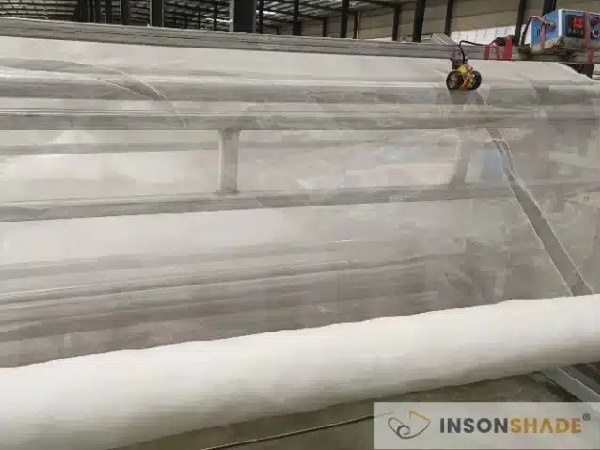
INSONSHADE’s production line for thrip netting
Conclusion
Thrips may be tiny, but they are among the most challenging pests in greenhouse cultivation. Compared to repeated pesticide applications—with their high residue risks—investing in the right thrip netting offers a more sustainable, effective, and long-term solution. It’s not just a piece of fabric—it’s an invisible barrier that shields your crops and protects your yields.
At INSONSHADE, we don’t just sell netting; we deliver complete thrip protection solutions. From product selection guidance and technical drawings to custom manufacturing and sample testing, we work with you to make this “simple-looking” task as professional and thorough as possible.
Contact us today to request a free sample, get a custom quote, or access detailed technical resources. Keep your greenhouse thrip-free, ensure healthier crops, and run your operation with greater confidence. Start your thrip-protection upgrade now.
